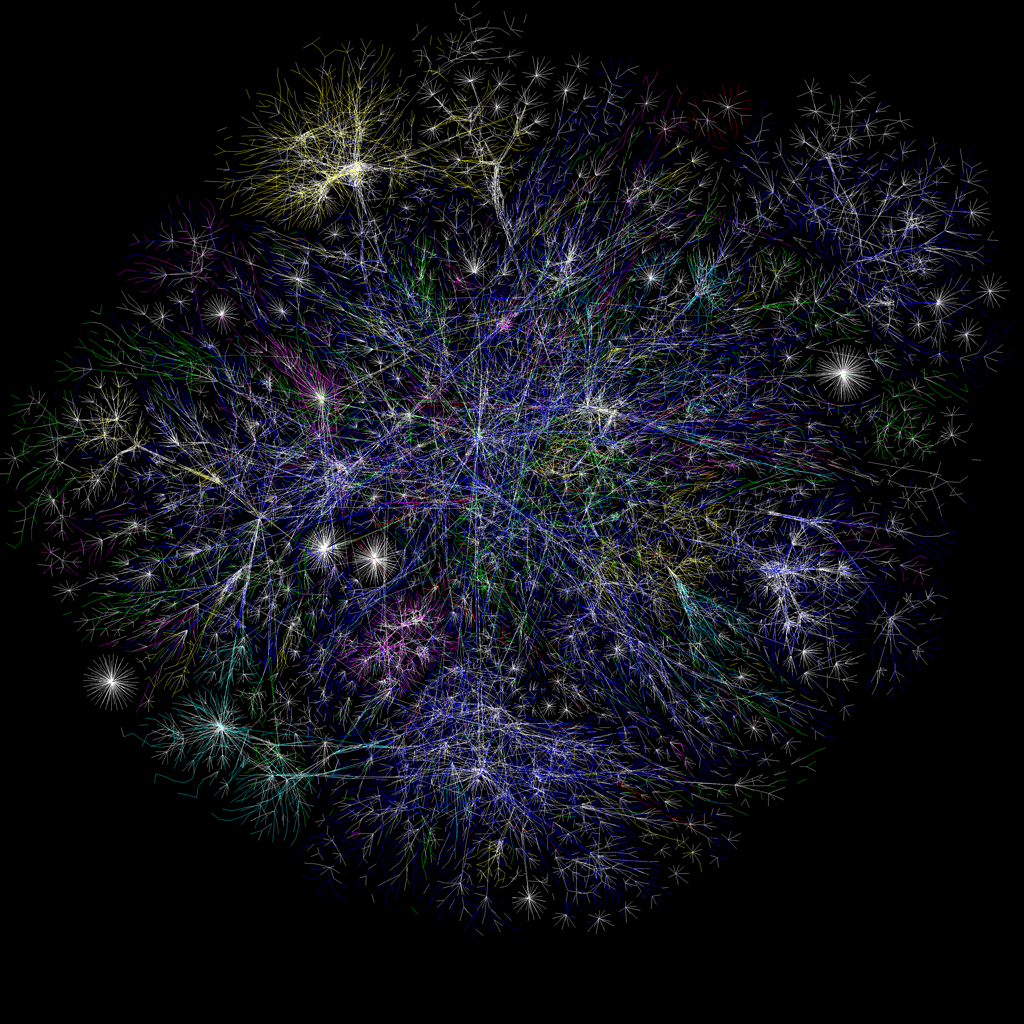Meeting the Privacy Movement
- 14 juni 2017
In 2013-2015 I made a snapshot of the Berlin-based privacy movement. Join me over the next few weeks and find out how these privacy activists operate, organize, and express dissent.
It is December 29, 2013 and digital activist, technologist, and researcher Jacob AppelbaumThis research was finalized in 2015 and does not take into account the changes within the movement that have occurred since the allegations of abuse against Appelbaum in 2016. closes the year with a talk titled To Protect and Infect, Part 2 at the 30th edition of the Chaos Communication Congress in Hamburg, Germany. It is the first edition of the congress after the publication of the Snowden documents, and also the first edition I am attending.
The Snowden documents
In the lectureAppelbaum's talk at 30C3., Appelbaum elaborates on the kind of surveillance activities the United States National Security Agency (NSA) deploys. He reveals, among other things, the existence of a dragnet surveillance system called TURMOIL. The information he shares, originates from the set of classified documentsThe Courage Foundation and Transparency Toolkit created a search tool to easily access the Snowden documents. that whistleblower Edward Snowden collected while working as an NSA system administrator. In June, 2013, Snowden decided to share these documents with the press, explaining that he does not “want to live in a world where we have no privacy and no freedomThis quotation was taken from Glenn Greenwald's book 'No Place to Hide. Edward Snowden, the NSA, and the U.S. Surveillance State'.” and that he finds that the public has the right to know what their government is doing to them and doing on their behalf. Later, at the 2014 Dutch Big Brother AwardsEdward Snowden addressed the audience live from Russia., he will add that he considered the NSA’s surveillance programs such a severe violation of human rights that he felt it was his obligation to make the documents public. Snowden’s statements are related to a larger, ongoing public debate about surveillance: how much knowledge about citizens is just and necessary for governments to possess and what actions are legitimate to obtain that information?
The activists
In the months after the Chaos Communication Congress, the subject of privacy and Internet surveillance is not the only thing that increasingly drew my attention. The activists involved in the discussion did, too. Four activists surfaced in the wake of the Snowden leaks and quickly took on leading roles in the debate: Jacob Appelbaum, Glenn Greenwald, Sarah Harrison, and Laura Poitras. Although these four individuals had shared beliefs, they do not share a common background. At the time of the first publications Glenn Greenwald worked as a journalist, Laura Poitras as a documentary filmmaker, Jacob Appelbaum as a technologist, and Sarah Harrison as a journalist and legal researcher for WikiLeaks. Although they are certainly not the only individuals who are relevant to the larger group of activists who work on privacy and surveillance issues, their diversity really is a reflection of the diversity of the group concerned with these issues.
The movement
Eventually I became so interested in the subject of privacy and the activists working on it, that I decided to turn this interest into academic research. In my master thesis Meeting the Privacy Movement. Dissent in the Digital AgeIn my master thesis I described the privacy movement as I encountered it from 2013 to 2015. I tried to capture the privacy movement as I encountered it in the first few years after the Snowden revelations. The more research I did into the movement, the more it struck me that it is incredibly diverse, decentralized, and therefore complicated to define. In spite of this, expressing dissent is one of the key characteristics of the movement. It is where activists find each other and share their ideas with the rest of the world. So what does dissent look like in the privacy movement? I identified three different ways in which the privacy movement expresses dissent, namely through whistleblowing, through art, and through protest. Each contributes to the understanding of the privacy movement as a whole.
Expressions of dissent
First, whistleblowing is interesting because its role is threefold. Besides whistleblowing being a way in which the privacy movement expresses dissent, whistleblowers are also a vital source of information to the movement and furthermore often become activists within the movement themselves. Second, activist art is a way for the privacy movement to communicate its ideas and goals, to members of the movement as well as to the larger public. Although there is only a small group of activists involved in the process of creating the art, it does affect the movement in its entirety. To illustrate how art and activism merge, I analyzed two art projects associated with the movement: Panda to PandaLaura Poitras documented the project in the short film 'The Art of Dissent'. and Anything to Say?.You can follow the 'Anything to Say?' project on Twitter. Last, the privacy movement also expresses dissent through protest. This is done both through traditional types of protest such as street demonstrations, as well as through protest forms that can only exist online, for example the development, promotion, and use of tools that provide more anonymity for Internet users.
Although dissent is an element that characterizes the privacy movement, it is certainly not the only one; so do its untraditional role of leadership within the movement and Berlin as its physical meeting place. If you would like to read more about the role of leadership and meeting places within the privacy movement, you can find more information about this in my thesis.
Starting next week, I will be publishing a series of articles in which I will explore whistleblowing, art, and protest as expressions of dissent. First up is the exceptional role whistleblowing has within the privacy movement.

